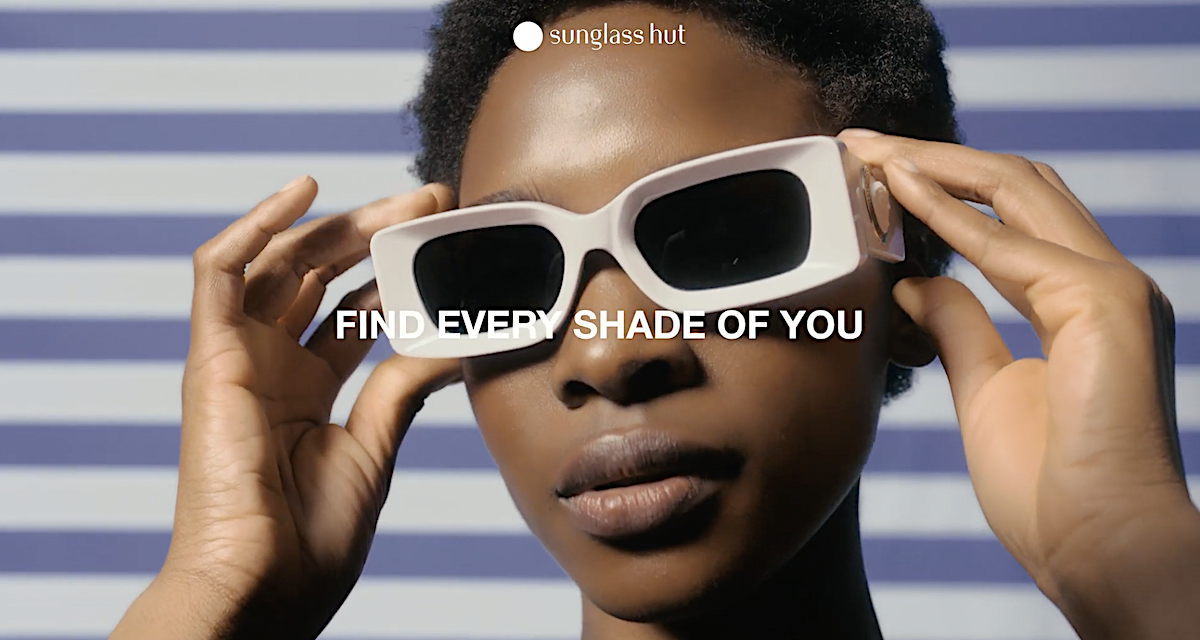Sunglass Hut sees a lift in store traffic after running CTV ads

Sunglass Hut is making connected TV a key part of its vision for courting consumers.
This summer and last summer, Sunglass Hut ran CTV ads with the goal of getting viewers to come by its stores. The company initially included a QR code that people could scan to get directions to their nearest Sunglass Hut location, the address of which would also be shown on screen. This year, Sunglass Hut added a code that linked to a 3D sunglasses try-on filter. Sunglass Hut, which is owned by Ray-Ban parent EssilorLuxottica, worked with the programmatic media platform Blockboard on targeting and subsequent re-targeting for both ad campaigns.
While Sunglass Hut is still crunching data for this year’s campaign, last year, it managed to increase year-over-year store traffic by 6X from July to September, which is when the campaign ran. Sunglass Hut also saw a 76% year-over-year decrease in cost per store visit, it told Modern Retail. Both years, Sunglass Hut ran ads across the U.S., where it has thousands of locations. The platforms it used included Hulu, Peacock, HBO Max and Paramount+, said Matt Wasserlauf, CEO and founder of Blockboard.
Although Sunglass Hut created digital streaming ads, it wanted to drive shopping in person, as that’s how the company makes most of its sales, explained Caroline Proto, director of global media for EssilorLuxottica. “People still have to put sunglasses on their face,” she said. “They still have to see how it fits and how it matches their style. Brick-and-mortar [retail] is our No. 1 revenue driver, and that’s why traffic is our No. 1 KPI [for this campaign].”
Globally, for its first half of 2025, EssilorLuxottica posted a 10.2% increase in year-over-year sales for its direct-to-consumer segment, which includes its stores and website. Sales within North America were up 4.9% year over year, at constant exchange rates.
For its 2024 campaign, Sunglass Hut ran an initial linear TV ad for mass reach. Sunglass Hut then ran a dedicated CTV video targeting several audiences, including those whom Blockboard determined were more likely to go into a store. Sunglass Hut and Blockboard then retargeted this audience with a 15-second video on mobile, desktop and tablet. After running its CTV ads, Sunglass Hut measured foot traffic in its stores through Cuebiq, a third-party partner.
‘Streaming television is television’
Sunglass Hut is one of a number of retail companies — from Cakes Body to Saatva — making CTV an integral part of its overall video mix. While streaming ads tend to be more expensive than linear ads, they also allow advertisers to attract highly specific demographics. Platforms like Disney+ and Amazon Prime Video have also increased their ad inventory in recent years, resulting in more slots for brands looking to experiment with CTV.
What also helps with adoption is that shoppers are open to watching ads on streaming platforms, said Tony Marlow, CMO for LG Ad Solutions, which runs CTV ad campaigns. A survey by his company found that 67% of streamers today prefer free, ad-supported streaming tiers, which Marlow attributes to factors like higher prices for streaming services and concerns about budgets. On average, streaming video subscribers in the U.S. pay for four services totaling $69 per month, up 13% from last year, per Deloitte.
EMarketer predicts that total CTV ad spending will surpass traditional TV ad spending for the first time in history in 2028. “I think it’s important to realize that for many people, especially under a certain age, streaming television is television,” Marlow said. “[For brands], it used to be that linear TV was the first buy, and then all the other pieces — social, online, CTV — fell around that. We’re starting to see media planners realize we’re in a CTV-first world.”
Industry data also shows that customers are responding to shoppable streaming ads. LG Ad Solutions found that the majority (79%) of CTV viewers said streaming ads influence their shopping decisions. After viewing a relevant CTV ad, 39% of people searched for a product online. A little more than one-fifth (21%) made a purchase, and 19% visited a physical store.
Personalized ads — as in the case of Sunglass Hut’s recent CTV campaigns — can move the needle, Marlow pointed out. Among CTV watchers surveyed by LG Ad Solutions, 75% preferred ads that felt “locally relevant.” Indeed, location targeting was a must for Sunglass Hut, Proto said. The Sunglass Hut ads recommended a store within a five- to 25-mile radius of a viewer’s address. It based this suggestion on traffic patterns within certain regions, such as if areas were more conducive to walking or driving and had access to subways or buses.
Sunglass Hut’s 2025 campaign with Blockboard wrapped on August 2, but the retailer plans to continue to invest in CTV. “If you have a video strategy, it’s a must-have,” Proto said. “After each campaign, we’re analyzing exactly which audiences performed, and that allows us to be more informed in future campaigns.”
Blockboard’s Wasserlauf added, “We’re showing that CTV really is an outcome-driven medium, and that’s what I find to be the most exciting aspect of this.”

